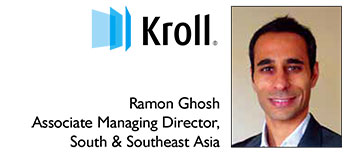Knowing your clients: how to assess red flags in challenging markets
 A frequent question posed by our clients is ‘How do I know who I am doing business with?’ The unknown is of particular concern for companies operating in a new region or conducting business in a jurisdiction where access to good quality and reliable information is a challenge. The solution is almost never straightforward and requires a number of different methodologies to ensure that businesses know their clients and vendors. Regulatory regimes such as the UK Bribery Act (UKBA) have added greater urgency to understand commercial partners. While know your client (KYC) checks were previously seen as a best practice, they are now mandatory given that the UKBA confers liability on corporate bodies whose “associated persons” (a widely-defined term under Section 8 of the UKBA) are found to engage in corrupt practices, including bribery and facilitation payments. Ignorance cannot be used as a defence and a business must positively prove “adequate bribery prevention procedures”1 were in place to prevent corrupt conduct and include undertaking risk assessments, due diligence and training relating to persons who perform services for, or on the behalf of, the organisation. Beyond regulatory considerations, genuine operational issues are also driving the need to understand more about counterparties. For example, conflicts of interest, over-invoicing or potential shelf vendor companies could adversely affect revenue generation in a significant way. Bespoke programmes When companies conduct a significant portion of work with one customer or vendor, they should also consider risk profiling those entities as a starting point. Special attention should be paid to those vendors or agents who are known to provide little or no support for their services, as well as those who are paid ‘offshore’ and those who are paid in cash or round sum amounts. Businesses are also increasingly putting the onus on clients or vendors to detail all KYC information in formal disclosures. This can be done via detailed questionnaires, certifying they are compliant with the company’s policies and submitting requested supporting documentation. These interactions can be tracked through specific portals which alleviate a degree of bureaucracy around the process and enable management to automate an onboarding relationship where necessary. Ultimately, however, these processes may not provide enough subjective information around a target entity. This is particularly relevant in jurisdictions in Asia where governance standards may be lacking and corroborating client information is difficult through open source information. One approach is to create a ‘risk score’ around a particular customer that will signal whether disclosures or red flags warrant further investigation; yet, even this method can lack subjectivity. To fully minimise KYC-related regulatory risks, especially in industries that involve interactions with government officials, it is imperative to speak with trusted sources on the ground to understand the reality of how operations are conducted and whether, in fact, disclosures from high-risk clients are accurate. ______ Endnote: |
Email: rghosh@kroll.com
Website: www.kroll.com

